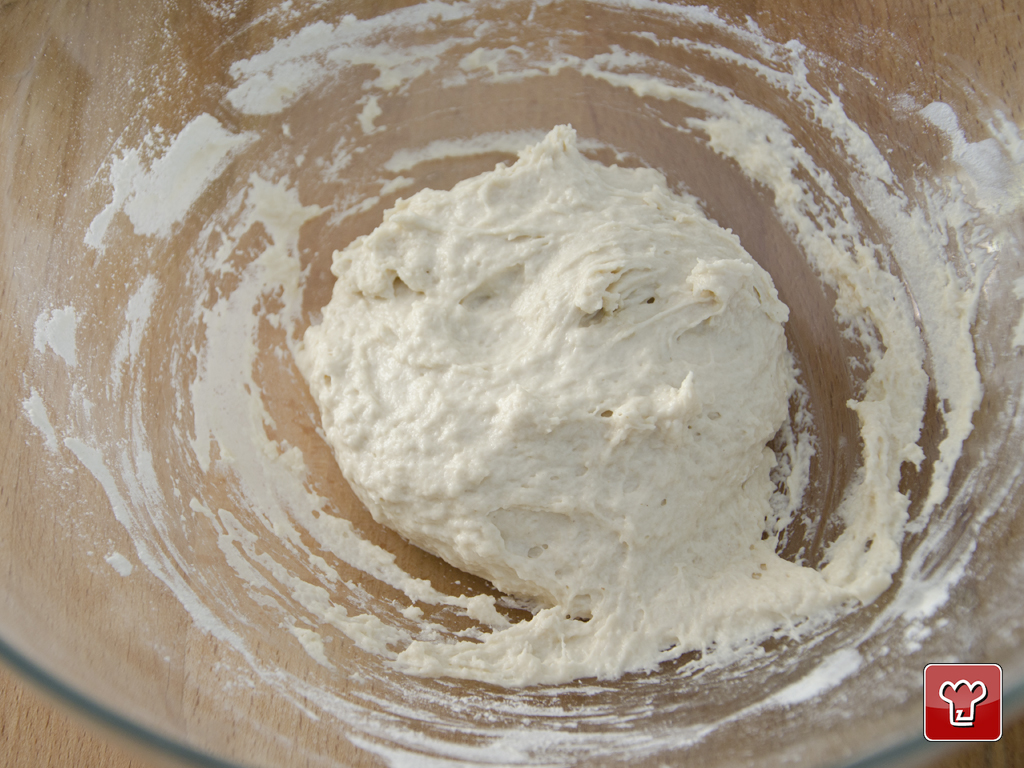Housewife’s Easter cake ‘colomba’
There are some cakes that are irresistible to both adults and children due to their lightness, aroma and inimitable taste: one of these is certainly the Easter colomba ‘dove’ cake, which is always served in Italy during this important religious festival. The cake symbolises Easter, both due to its shape as a dove, itself also a symbol of peace and purity and, as it contains eggs, as a metaphor for rebirth. Recipes to make this Easter cake are countless and making it at home takes a long time due to the extensive rising periods, so that, like many traditional desserts, it requires more than one day to complete. The recipe that I offer here comes from a magazine and is a slightly different version from that suggested by Anna Moroni. When covering the cake with the icing, take care not to go right to the edge of the mould because, otherwise, the glaze will leak out during cooking.
Ingredients
-
"00" flour 250 grams
-
sugar 200 grams
-
milk 250 millilitres Tepid
-
butter 220 grams
-
powdered sugar 150 grams For the icing
-
sugar Granulated, to taste

Send the recipe
Preparation
Sift the flours and make the raising agent by kneading together 150g g flour with the yeast dissolved in 125 g of warm milk. Let it rise for about an hour. Then add to this dough the other 150 g of flour, 120g of sugar, the remaining milk and 125g of butter. Knead thoroughly and let it rise for 3 hours. At this point combine the rest of the ingredients, the eggs, egg yolks, candied fruit, grated zest, butter and remaining flour, honey and vanilla. Knead and let it rise for 12 hours at constant temperature. After this time is up, transfer the dough into two moulds of about 750 g each and let it double in volume. When it is about 1 cm below the rim, sprinkle with icing that you have made by whisking the flour, almonds, icing sugar and egg whites together. Decorate the surface with whole almonds and sugar grains. Bake, finally, at 200°C for 10 minutes, then lower the heat to 180°C for another 40 minutes. Remember to cover the surface with aluminium foil halfway through the cooking time to prevent the icing darkening too much.
Step by step
|
View the step by step
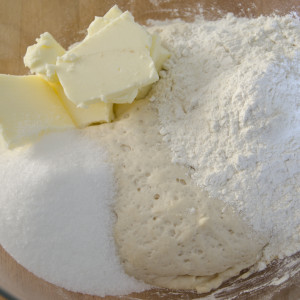
|
Knead the starter dough with the flour, sugar and butter
|
|
View the step by step
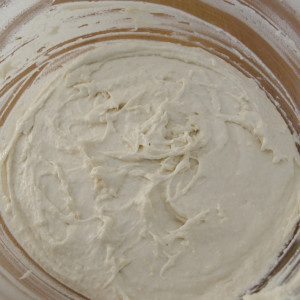
|
Leave to rise for 3 hours
|
|
View the step by step
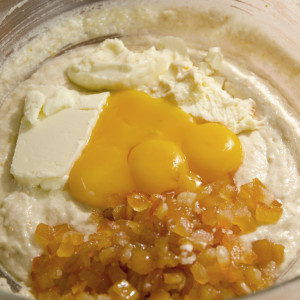
|
Add the eggs, candied fruit, butter and honey
|
|
View the step by step
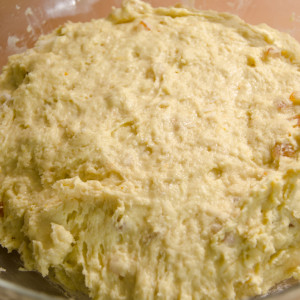
|
Leave to rise overnight
|
|
View the step by step
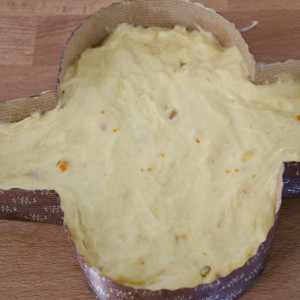
|
Transfer the dough into the dove-shaped mould
|
|
View the step by step
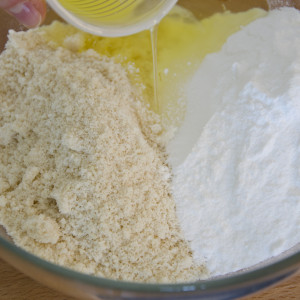
|
Prepare the icing with almond flour, the icing sugar and the egg whites
|
|
View the step by step
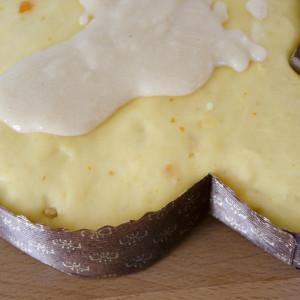
|
Cover the cake with the icing
|
|
View the step by step
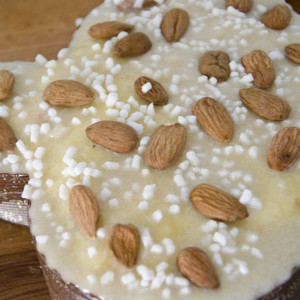
|
Decorate the surface with the almonds and granulated sugar
|
|
View the step by step
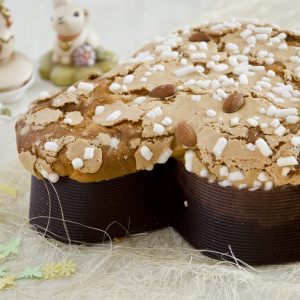
|
Leave to cool completely and serve
|
Additional Information
Traditional Easter Colomba cake
The Colomba cake is a traditional Easter delicacy in Italy, cherished for its symbolic significance and delightful flavor. Resembling a dove, the cake embodies themes of peace and rebirth central to Easter celebrations in Christian tradition. Its soft, moist texture and rich aroma make it a beloved treat enjoyed by families and communities across Italy during the Easter season.
Easter Colomba cake recipe
To prepare an authentic Easter Colomba cake, one must gather high-quality ingredients and follow a meticulous process. The recipe typically involves combining flour, sugar, eggs, butter, and yeast to form a rich dough. Candied orange peel and almonds are often incorporated for added flavor and texture. After proofing and shaping the dough into a dove-like form, the cake is baked until golden brown, then glazed and adorned with sugar and almonds for a final touch of sweetness and elegance.
Easter Colomba cake ingredients
The ingredients for an Easter Colomba cake are carefully selected to ensure a harmonious blend of flavors and textures. Common ingredients include flour, sugar, eggs, butter, and yeast, which form the base of the cake's dough. Additionally, candied orange peel and almonds are essential components, imparting a distinctive citrusy sweetness and nutty crunch to the cake. These ingredients, combined with a hint of vanilla or citrus zest, contribute to the Colomba cake's irresistible aroma and taste.
What is an Easter cake called Colomba
An Easter cake called Colomba is a traditional Italian dessert synonymous with the holiday's festivities. The name "Colomba" translates to "dove" in English, reflecting the cake's distinctive shape, which symbolizes peace and renewal. Colomba cakes are intricately crafted to resemble doves, with their elongated bodies and outstretched wings, making them not only a culinary delight but also a visual representation of the Easter spirit.
Why do Italians eat Colomba for Easter?
Italians eat Colomba for Easter as it symbolizes peace and resurrection, mirroring the dove-shaped form, representing the Holy Spirit.
What is the meaning of the Colomba cake?
The Colomba cake holds religious significance, embodying the dove, a symbol of peace and rebirth in Christian tradition, particularly associated with Easter.
What is the difference between panettone and Colomba?
While both are traditional Italian cakes, panettone is typically consumed during Christmas, characterized by its dome shape and inclusion of candied fruits, while Colomba, shaped like a dove, is reserved for Easter and contains candied orange peel and almonds.
What is the name of the Italian Easter cake?
The Italian Easter cake is called Colomba, which translates to "dove" in English, symbolizing peace and the resurrection in Christian tradition.




